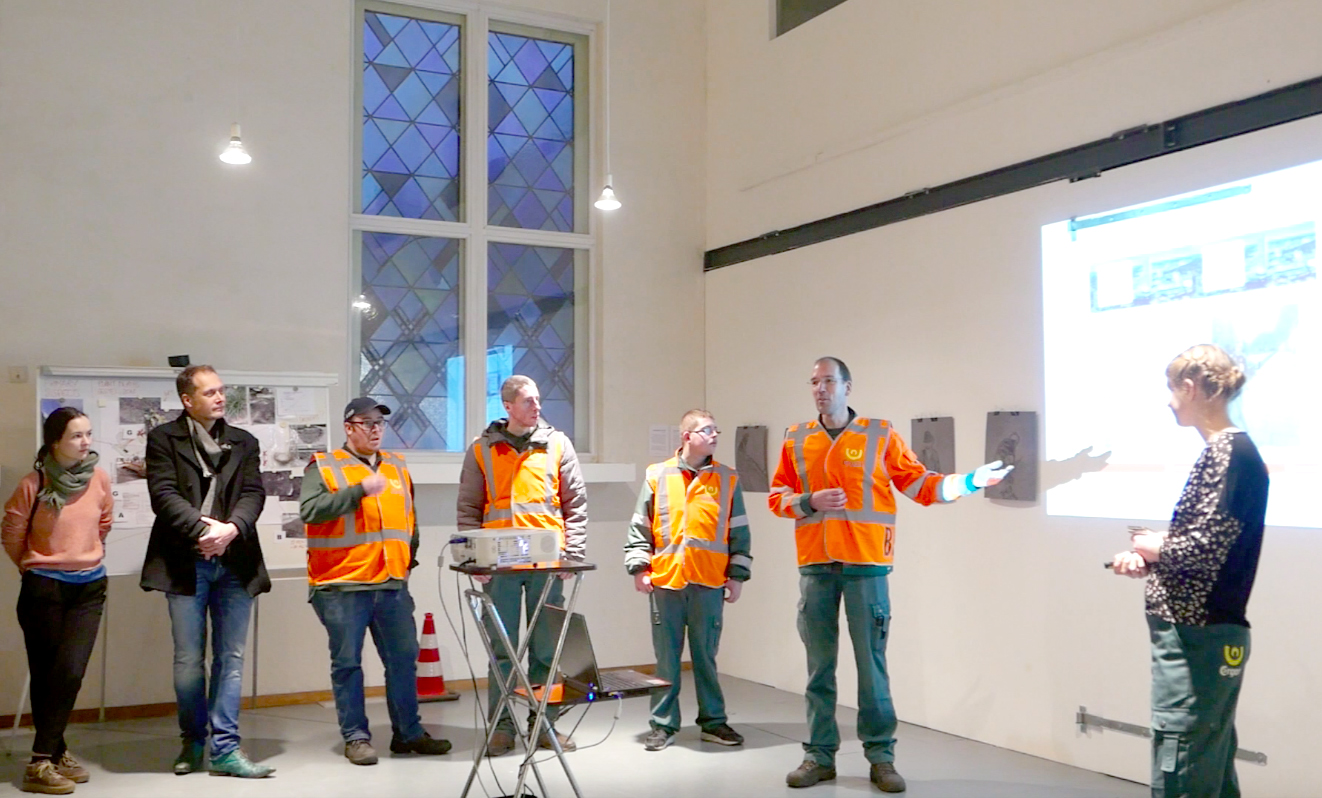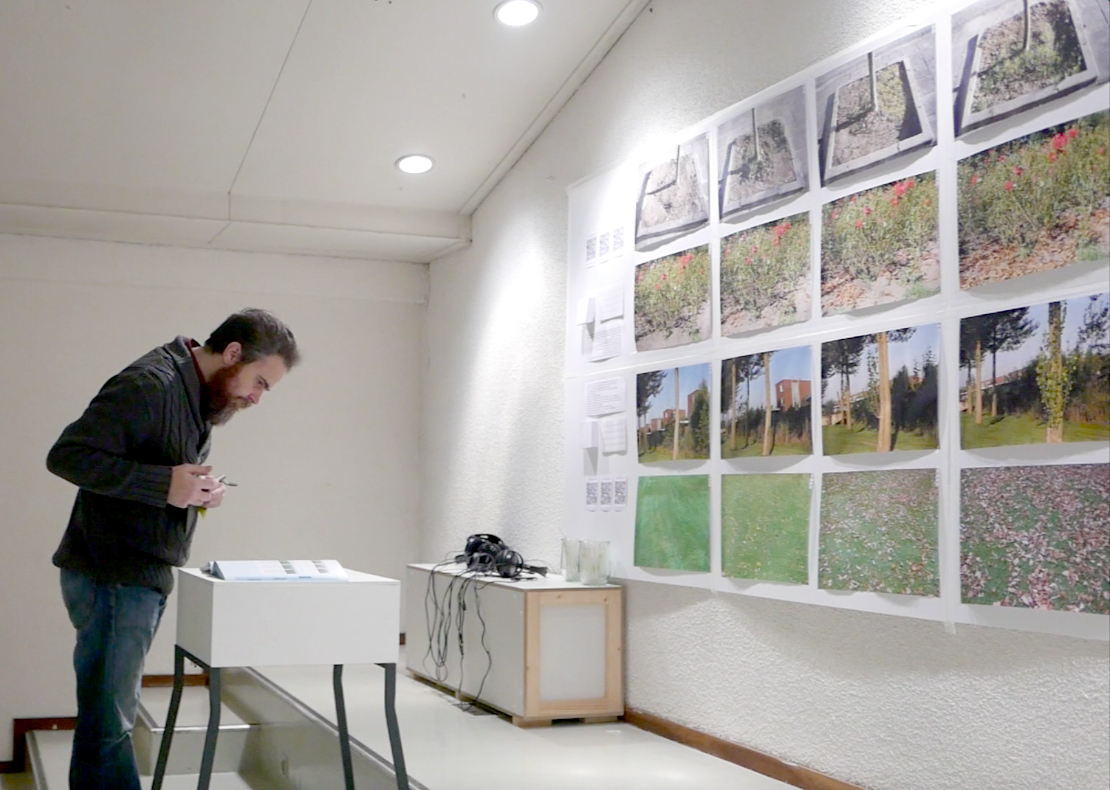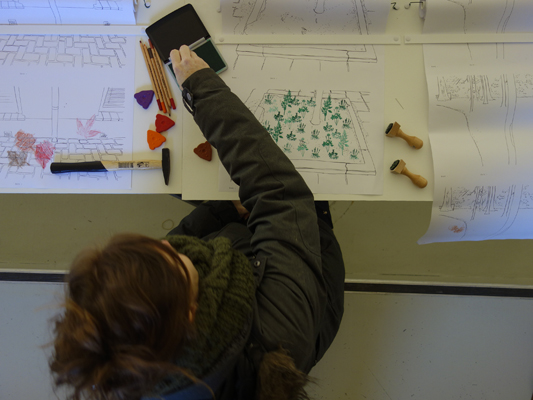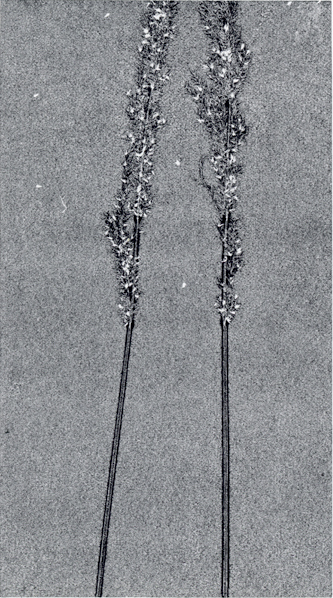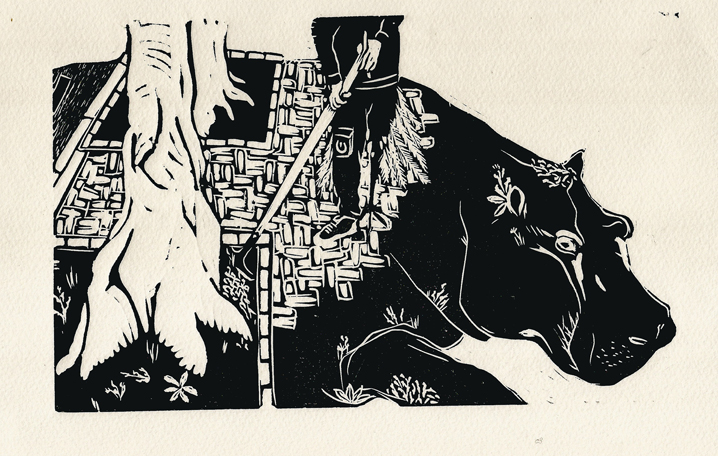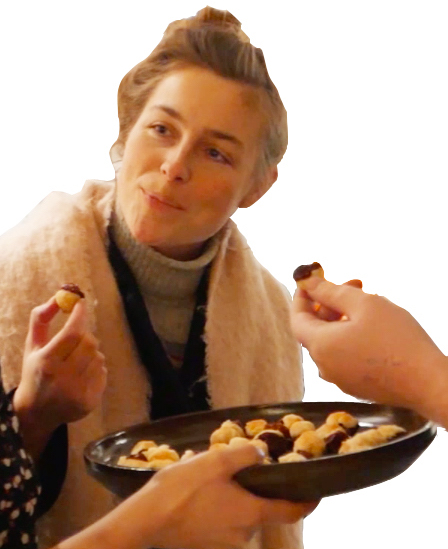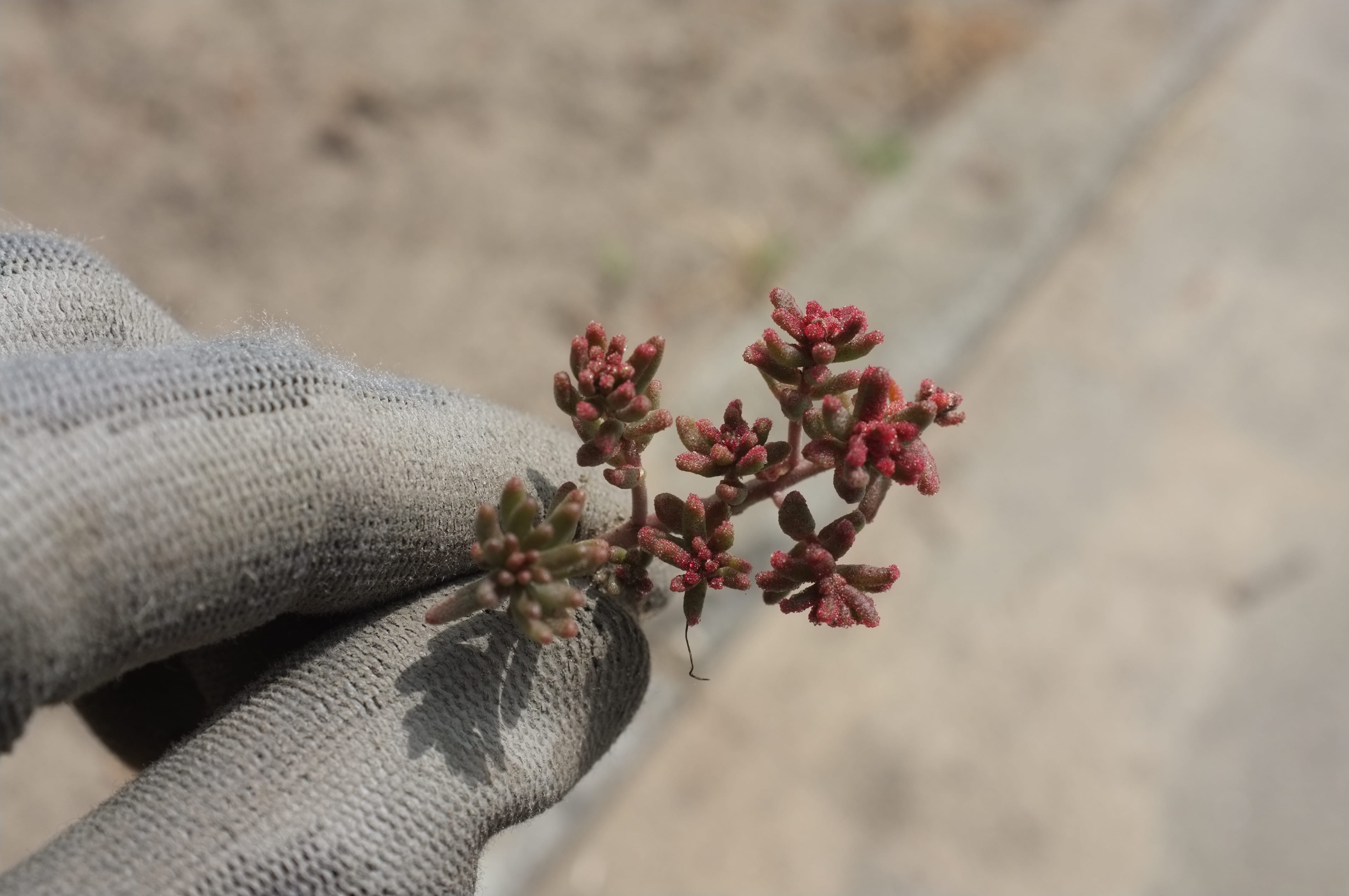End of 2018 I started to work with the public green-workers of my neighbourhood. They were employed by Ergon, a social company of Eindhoven that helps people in finding the way to work (again), providing
them with sheltered work when necessary. Those sheltered works are mostly related to making the city of Eindhoven function : cleaning, repairing, transporting, managing traffic… maintaining its vegetation.
Although this collaboration was
not planned, it was very fruitful and it gave me a topic that I am probably going to work on for years ...
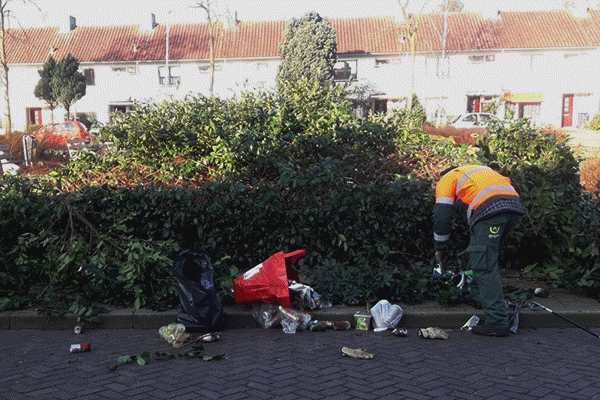
What relationship do we (citizens) have/want to create with our living environment?
Can alternative, shared systems of maintenance make space for not only more biodiversity (enjoying its « ecosystem services ») but also a more cohesive and
participative society, without putting pressure on the resident ?
The project is therefore the trigger for stories and outcomes…
Step 1: meeting the green-workers of Ergon and becoming their first « designer in residence ». Methodology and general concept.
Step 2 : « working residency » being employed as part-time green worker (no budget for a designer) in order to continue the research. Getting a much more embodied, realistic and detailed knowledge and accumulating material that opened up
new practices, next to Ergon.
Step 3 : Graduation show and receiving the Social design Talent award by the municipality of Eindhoven, getting a budget and a assignment from Ergon and the municipality. Concretising the general concept into 7 tools to better appreciate
and make use of the public green workers.
Step 4 : Outside of the collaboration with Ergon, but influenced by my experience there and in the same realm : working for 1 year with Cascoland to create and mostly maintain new shared green spaces in Nieuw-West, Amsterdam. Working hands
on with volunteers and resident to create a fruit garden out of a grass field. Adopting the view of the citizen and experiencing the challenges for a long lasting green initiative in the city.
Step 5 : « Digital botanics » looks at vegetation both in urban landscapes and in digital representations, like video games. In both world, plants have been designed for, maintained and used in specific ways, and we are curious how both realities
can inform each other
Step 1, detailled.
I first met the green-workers by chance, while researching the ressources of my neighbourhood. I had picked a yellow fruit from a bush in the street that ressembled a small apple and smelled really good. Later on I met a team of green-workers and asked them wether it was edible. It came to my mind that they had a privileged position to know about the neighbourhood, since they spent their time taking care of its commons and being out there all day long. So I asked to become their intern for a day.
Methodology
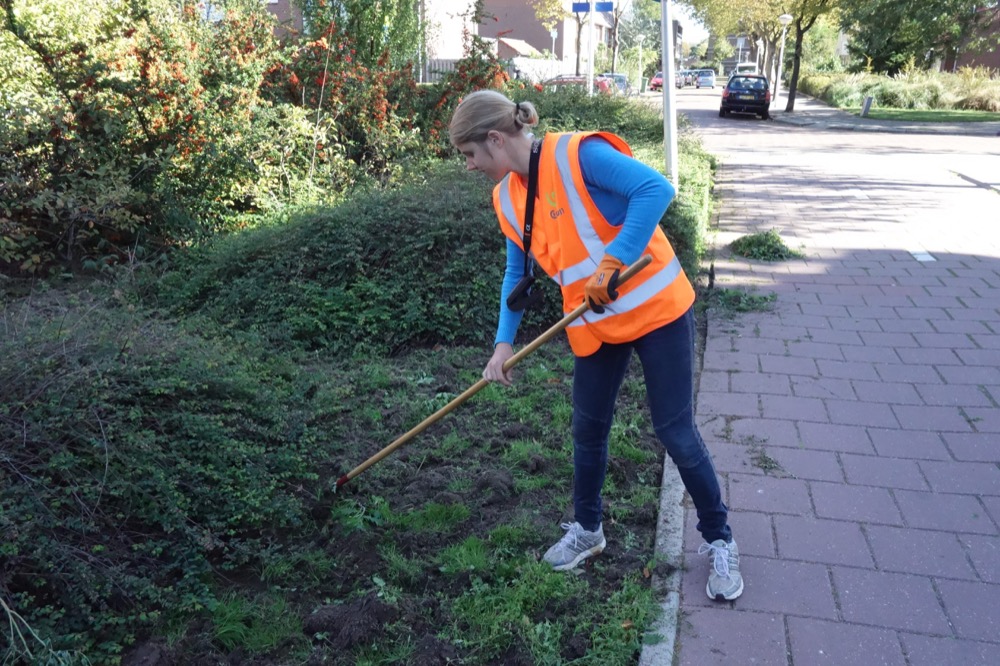
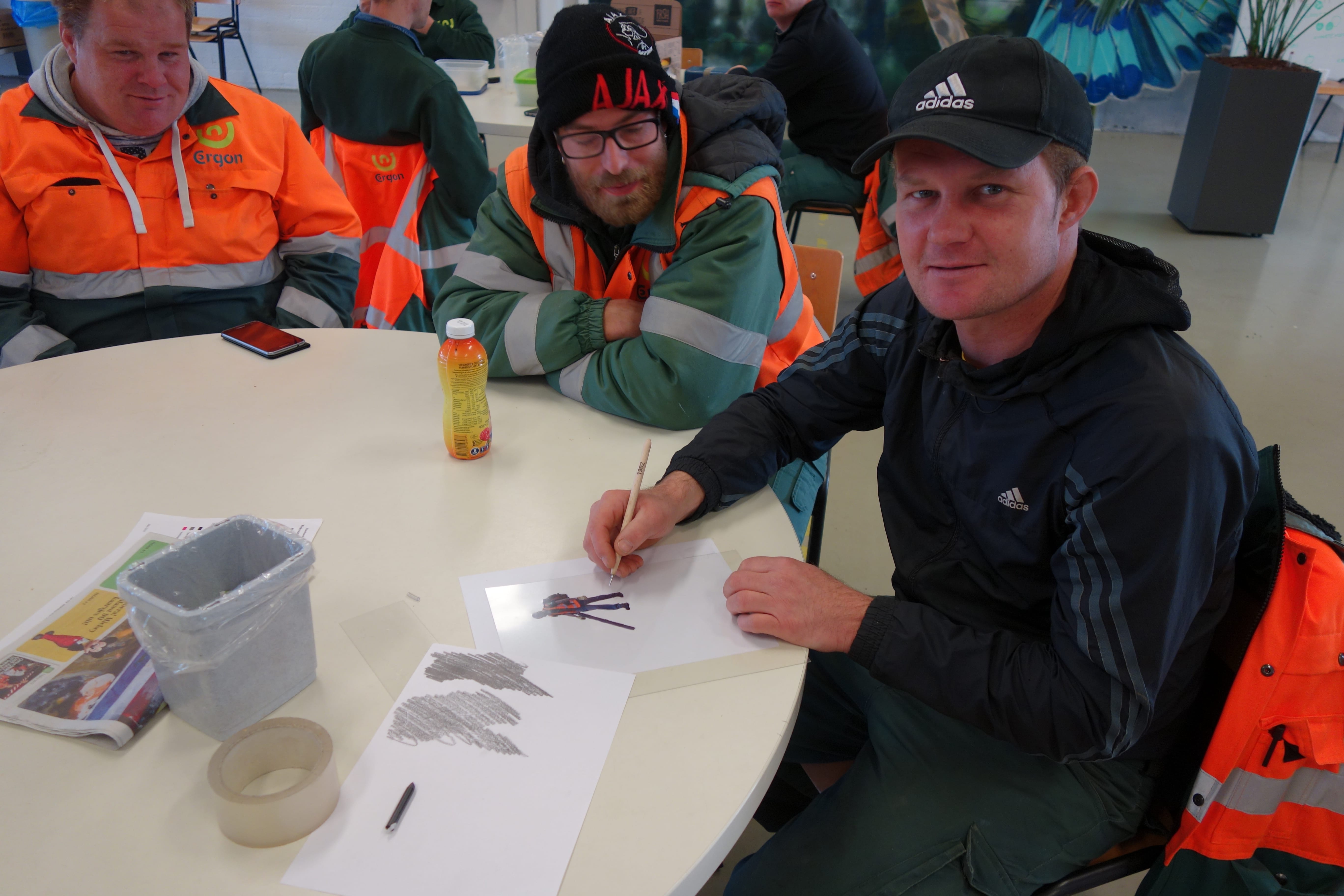
Now : waiting and working for Ergon to implement a real artist in residence at their company, and in order to keep contact and continue my research, I am working part time as one of their gardener. I see this new position as a working residency. It brings challenges in order to keep being creative, observing and enthusiast while dealing with physicall tiredness and being treated the same way as the other workers (although I have a bit of priviledge status, I can still take picture and ask questions). I am less of an outsider, get use to the institute and loose a bit my external, free thinker, radical point of view. On the other hand, I know the work from the inside, and get a better glimpse of the challenges and potentials that awaits me in my project. And I builded new links with my colleague and my boss (still using food!). I am learning a lot about work and labour environement. And also very much about plants, which are fascinating!! I use my free time to communicate impressions or anecdote from my work as gardener through instagram and a series of linocuts and prints.
The concept :
Have you ever walked in a park in Eindhoven, during the fall? You will see bright green grass kept neat and tidy by any of the numerous green workers employed by the city. Even with bright safety uniforms, they still remain unnoticed, and their work relatively unknown. The workers follow and apply very specific regulations concerning the upkeep of public space such as squaring curves, measuring plants, and cleaning the leaves, weeds and fruits from the street … These rules create a physical distance between nature itself, a sort of psychorigid control that is unsustainable and seeps into the relationship between city dwellers and nature itself. There is also the psychological distance between manual city laborers and the citizens themselves. Building a bridge and reframing the context elevates the status of both the work, the worker and the inhabitants, and creates sense of neighbourhood by integrating agency and responsibility.
The goal : Changing the position of the "green workers" into "Buurttuiniers": neighbourhood gardeners who can make use of their local expertise to help inhabitants relate to their immediate green environment, take pleasure from it and agree on a more sustainable maintenance plan.

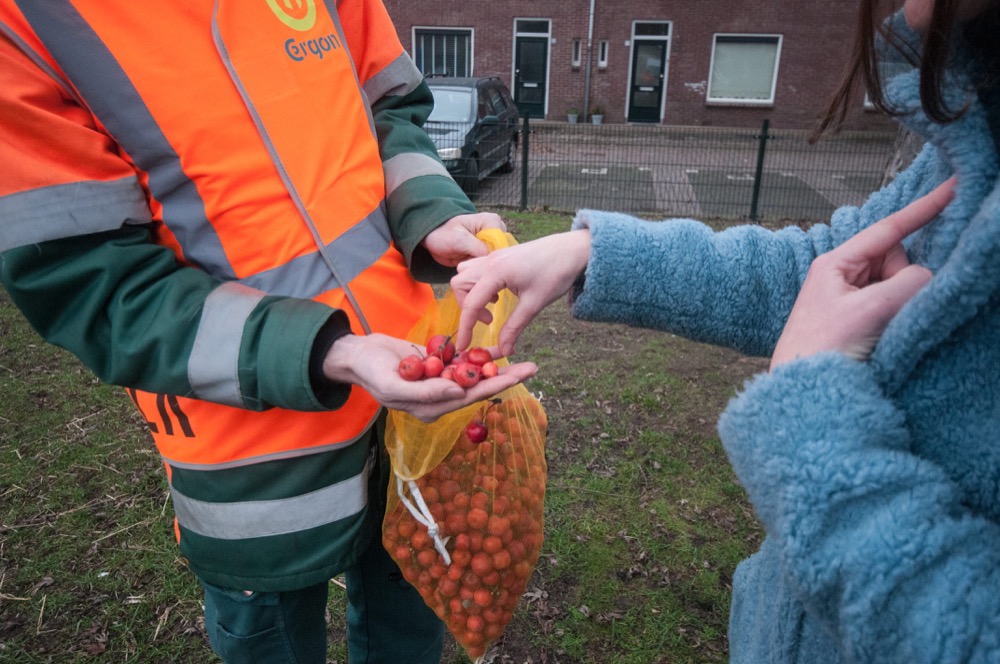

How to trigger inhabitants curiosity for public green ?
